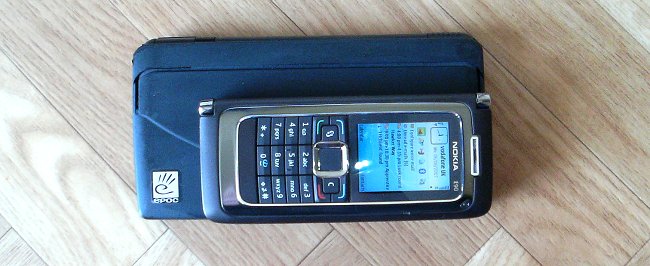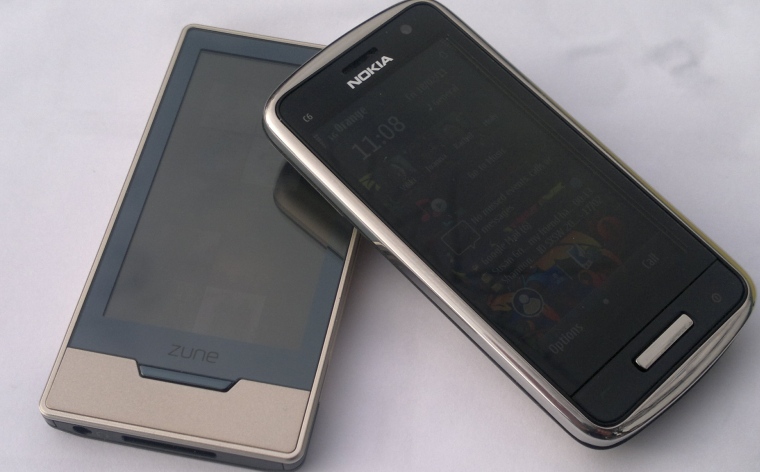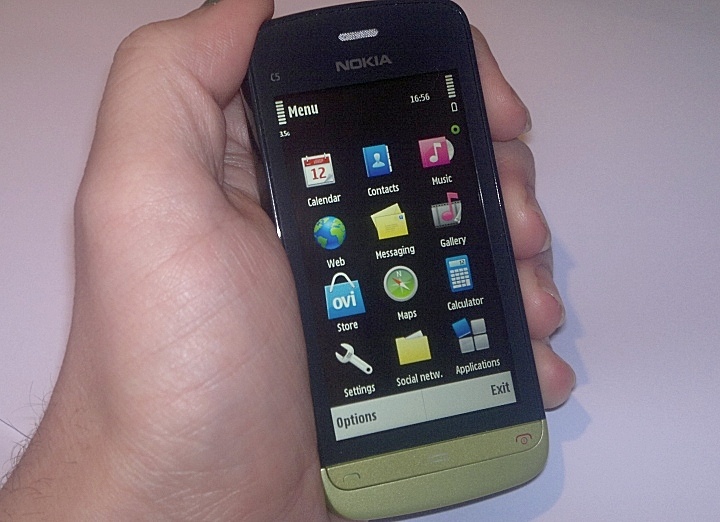 So, why is it not a great idea? There is the appearance of demand in the market for the standalone “media” player, and to be honest when you look closely at these devices, they really are the PDA’s of yesteryear in disguise – there’s the contacts application, the address book, a note-taking application, and in some form they have sync capabilities out to either the cloud or your desktop computer.
So, why is it not a great idea? There is the appearance of demand in the market for the standalone “media” player, and to be honest when you look closely at these devices, they really are the PDA’s of yesteryear in disguise – there’s the contacts application, the address book, a note-taking application, and in some form they have sync capabilities out to either the cloud or your desktop computer.
The leading device here is of course the iPod Touch, which continues to sell in sufficient numbers that it stays in the Apple portfolio and receives solid promotion. For many that don’t need the cellular connection or the ongoing expense of a mobile contract, but do want connectivity (via Wi-fi), applications and media, the Touch is a smart choice.
I suspect that is is the same market that Samsung are hoping to address with their Galaxy Touch, a cellular-free version of their Android powered Galaxy smartphones. And any keen observer of history will know that Microsoft’s Zune HD managed to turn out to be a pretty neat idea, even if only seven people in the world bought one.
The technology behind the idea is pretty simple – you start with a solid smartphone design, rip out as much as possible with a laser-like focus on dropping the component cost while still keeping a great user experience. That means keeping as much compatibility with the existing devices as possible to leverage the App Story and existing media and content. So an nHD screen and GPS would be in there, along with the CBD screen. I'd trim the main mobile radio, leaving Wi-fi and Bluetooth. The camera is a debatable point, but I think that Nokia probably have the bulk ordering of the EDoF units sorted so it could make good business sense to keep the camera on there.
But Nokia’s biggest battle would not be the tech websites continuing with the “Symbian is so much harder to use” myth, but in reaching out to the people who buy devices like this. Quite simply, they’re not Nokia’s traditional customers.

These customers, the mobile phone networks, have very little need for hardware that doesn’t connect to their network and incur a monthly rolling charge – sure the iPod Touch was occasionally a giveaway in years gone past for signing a contract, but it’s not part of the sales plan. Which means that the normal route for Nokia to know they are going to sell X thousands/millions of units would not be open to them.
In the current climate, it’s unlikely that Nokia would want to look at launching a totally new product line – and there’s no doubt that a Symbian based Media Player would be a disruptive storyline for the PR department to deal with. Even if it makes technological sense, the business reality would make it unlikely to see a standalone consumer electronics device in 2011.
The moment to look at this would have been early last year, while the N8 was under development, to have a “3G + wifi” and “wifi only” variant ready to go (arguably, the Wifi only unit might have been ready earlier and sated the demands for Symbian^3 from the rabid corners of the internet – another in the long like of 'what ifs' that surround every company).
You could argue that this would be a perfect space for a small company to get involved with Symbian – again I think the moment has passed for this to happen. Although it would be an excellent test to see how open Nokia has made Symbian OS, some of the big benefits of a media player that would be available to Nokia would not be available to another manufacturer (such as the Ovi Store and Ovi Music, both key ecosystem components).
Would I like to see one, especially running Symbian^3? Yes I would, but that’s the romantic gadgeteer in me. Looking at the practical angles, it’s unlikely we’ll see a “Symbian PDA” from Nokia or from anyone else in the technology field.
 The Nokia C5-03 - your 'cheap as chips' PDA/Media player in all but name.
The Nokia C5-03 - your 'cheap as chips' PDA/Media player in all but name.
In addition, with devices reaching out to the sub $100 mark to buy outright (such as the Nokia C5-03, reviewed here), we’re not that far away from a standalone device, at a smart price, that doesn’t need the expense and complexity of a mobile phone contract. The Symbian PDA is already here, and if you want one you can pick one up for minimal cost. And if you do want to get always-on connectivity, the chances are a mobile network will hand you one for free, albeit with a small monthly fee for data and calls.
The PDA market never disappeared, it’s just that fifteen years ago, there wasn’t a multi-million selling market for 'smart' phones. Now there is, and it makes little commercial sense for a company to aim a device solely at this market – far better to exploit the supply chain and economy of scale present in the mobile market, to create capable devices at low cost and, dare I say it, aim for the next billion users.
-- Ewan Spence, April 2011.
